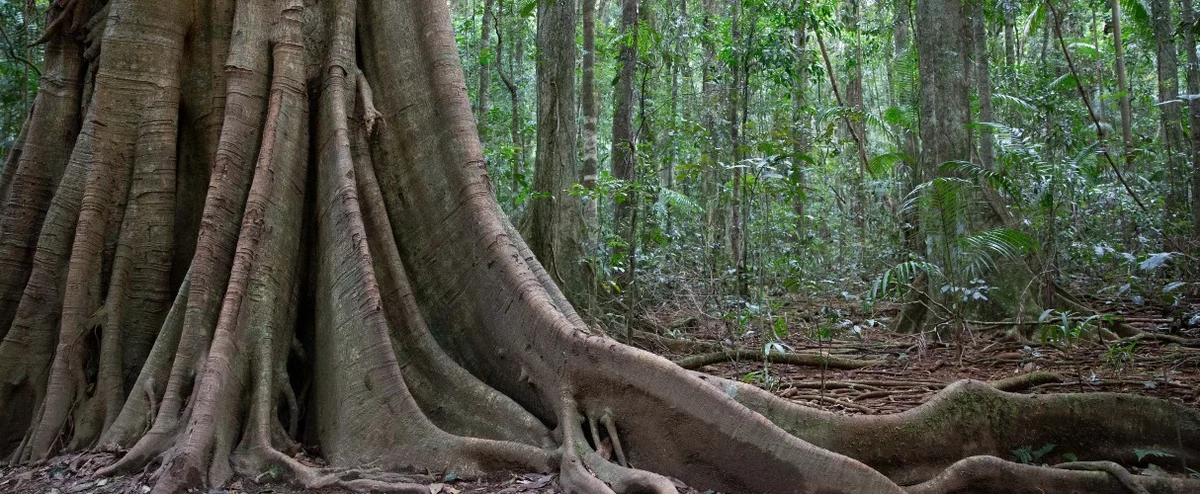Also commonly referred to as the strangler fig, the Watkin’s Fig ( Ficus watkinsiana) is a giant of the reserve. The majestic tree grows to an impressive 45 meters in height and up to two – three metres wide.
The Watkin’s Fig frequently starts life growing from the branches of a host tree, the seed deposited in the droppings of a bird. This adaptation provides a shortcut to the canopy. Aerial roots head for the ground and go on to fuse and create the characteristic lattice pattern of the trunk. Sometimes the tree will have a hollow centre, left when the host plant has died and rotted away. The hollow centre makes great habitat for a variety of creatures from owls to small microbats.
The Watkin’s Fig also has a symbiotic relationship with the tiny fig wasp. Break open a fig and you will see that what we think of as a fruit is actually an inside-out flower (syconium). The hundreds of tiny florets inside the fig can't be pollinated by traditional pollinators like bees and rely instead on small fig wasps. After hatching and mating inside a fig the female fig wasp flies to another fig and burrows in to lay her eggs. In the process she sheds pollen from the first fig and pollinates the flowers. The wasp eggs hatch inside the fig and begin the cycle again.
The large purple fruit is popular with fruit eating birds such as the Wompoo Fruit-dove and macro-bats such as the Grey-headed Flying-fox.
